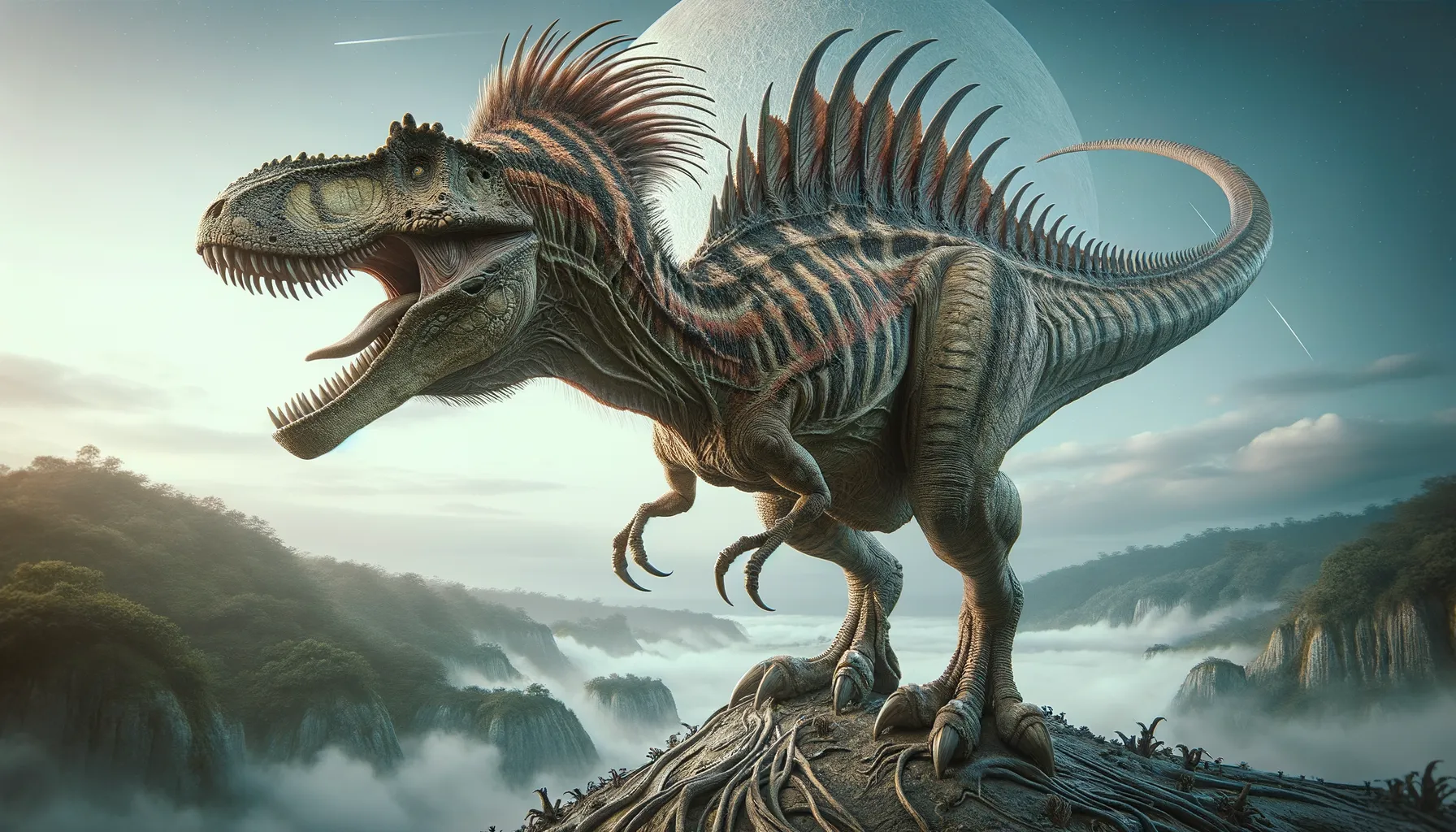
Chilesaurus
A curious mix of dinosaur features!
Period
Jurassic
Length
About 3 meters long.
Height
Roughly 1.5 meters at the hips.
Weight
Approximately 50 to 80 kilograms.
Chilesaurus is a unique dinosaur that lived around 145 million years ago during the late Jurassic period. Discovered in Chile, it is often called a 'Frankenstein dinosaur' because it has features typical of several different dinosaur groups. Its unusual mix of traits includes herbivorous teeth and a body shape resembling that of theropod dinosaurs, making it a puzzle for scientists, who study its evolutionary relationships.
Diet
Chilesaurus was herbivorous, feeding primarily on plants and foliage. It had leaf-shaped teeth, ideal for processing plant material, distinguishing it from its carnivorous theropod relatives.
Hunting
Unlike many theropods, Chilesaurus did not hunt for meat. Instead, it might have foraged on low-lying vegetation and possibly used its forelimbs to manipulate plant material.
Environmental challenges
Living during the late Jurassic, Chilesaurus faced competition from both herbivorous and carnivorous species. It had to adapt to varying climate conditions and changes in plant availability. The landscape was dynamic, requiring constant adaptation for survival.
Speed
Likely slow-moving due to its small size.
Lifespan
Estimated to live several decades.
First discovery
Discovered in Chile in 2004 by a seven-year-old boy.
Fun Facts
- Chilesaurus is nicknamed the 'platypus dinosaur' because it combines features from different dinosaur groups, much like a platypus has traits of different animals.
- It was discovered in the Toqui Formation of Chile, hence its name 'Chilesaurus'.
- Chilesaurus lived during the Late Jurassic period, around 145 million years ago.
- Unlike many of its carnivorous relatives, Chilesaurus was a herbivore, having evolved to eat plants.
- Its body resembles that of a primitive sauropod, but its teeth and beak were better suited for a herbivorous diet.
- Chilesaurus has been a big mystery for scientists as its traits suggest it belongs to different dinosaur groups, showcasing how diverse these ancient creatures were.
- It was first described by paleontologists in 2015, causing a sensation in the scientific community.
Growth and Development
Chilesaurus likely had a growth pattern similar to other small dinosaurs, with rapid growth during early life stages. This quick development would have helped avoid predation. Its skeletal structure indicates a flexible growth strategy, allowing it to adapt to environmental pressures.
Habitat
It inhabited the ancient landscapes of what is now Chile, characterized by rich ecosystems that supported a variety of life. The environment would have included dense forests and open areas for grazing. Water sources would have been a necessary component of its habitat, supporting plant growth.
Interaction with other species
Chilesaurus might have shared its environment with both predators and other herbivores. It coexisted with a variety of Jurassic dinosaurs, possibly competing for resources. Social interactions could have ranged from solitary behavior to small group clusters for protection.
Natural lifespan
Chilesaurus probably had a natural lifespan of several decades.
Reproduction
Like other dinosaurs, Chilesaurus likely reproduced by laying eggs. Nesting sites could have included sheltered areas to protect from predators. Parental care might have been minimal, with offspring relatively independent after hatching.
Social behaviour
Chilesaurus may have lived in small, social groups, aiding protection from predators. Communication might have included vocalizations and visual displays, although evidence is sparse. Social structures could have helped navigate its complex ecosystem.
Fossil locations
Fossils of Chilesaurus have primarily been found in the Toqui Formation in Chile. They provide significant insight into the diversity of dinosaur species in South America. This region's unique geological context aids paleontologists in piecing together its evolutionary links.
